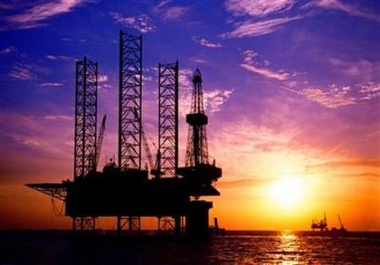
After seven months on a tailspin, shedding off over 50% of value and reaching a price as low as $46 per barrel mid-January 2015, the oil price rallied quite dramatically over the last few days of January, raising hopes among the oil producers that the price might have bottomed out.
The crude oil price rose 19,5% in four trading sessions to $57,91 at close of day on February 3.
Over the past seven months, the oil price has been on a precipitous fall on the back of weak economic data from Europe and China, oversupply and a stronger US dollar, as well as on a war for control of global energy markets.
The Organisation of the Petroleum Exporting Countries (Opec) has been holding its production level stable at 30 million barrels per day despite oversupply driven by lower demand in China and Europe and expanding shale production by the USA.
The world’s largest oil consumer, USA, which consumes about 25% of the world’s oil production, has benefited the most from the lower oil prices.
It has over recent years been boosting its oil production supported by shale production, through fracking or hydraulic fracturing to substitute imported oil and gas.
This has seen US commercial crude stock increase to the highest level since 1931 as at the last week of January 2015, to the current level of 44 days of production. The US has also for the first time since 1995 moved from being a net importer to a net exporter of natural gas.
What could be driving this recovery in oil price and is it sustainable? It seems the rally has partly been due to announcements of significant capital expenditure (capex) cuts by major oil producers such as BP, BG Group and CNOOC (China).
- Chamisa under fire over US$120K donation
- Mavhunga puts DeMbare into Chibuku quarterfinals
- Pension funds bet on Cabora Bassa oilfields
- Councils defy govt fire tender directive
Keep Reading
BP announced that it would cut its 2015 capex by 13% to $20 billion.
BG Group Plc said it expects its 2015 capex to be “significantly lower” than it was in 2014, falling to between $6 and $7 billion.
The company took an $8,9 billion impairment charge due to lower oil prices and is selling-off some non-core assets to reduce its debt.
In January, Qatar Petroleum and Royal Dutch Shell Plc ended plans for a $6,5 billion petrochemical plant in the Middle East.
Sasol will delay the final investment decision on its planned $14 billion and US’s first gas-to-liquids plant. ConocoPhillips will shave 20% off its 2015 capex budget and is now expected to spend $11,5 billion.
CNOOC says it will cut its 2015 capital expenditure by 26-35% to between $11,2 billion and $12,8 billion. The industry could be shelving as much as $150 billion in capex this year and this is expected to affect future supply.
On the other hand, a sharp fall in the US rig count, that is the number of oil rigs drilling for oil in the USA, indicates a decline in activities that underpin the US shale oil production, pointing to expectations that US crude production could come down significantly this year, which could reduce the global oversupply of oil.
For oil producers, lower oil prices mean lower revenues and cash flows, and this limits the ability of these companies to raise finance and maintain current production levels.
Based on the average cost of production in the US, most economists and analysts still agree that crude oil would need to trade at about $40 a barrel to slow supply growth and curtail capital spend.
The good thing however about the sharp fall in oil prices is that it has forced the oil majors to become more efficient by ditching non-value adding projects and those on the fringes.
This may in itself help sustain lower oil prices for longer in an environment characterised by low or sluggish global growth.
What this all means is that underinvestment in the sector and reduced activity within the US shale production could be a pre-cursor for future higher oil prices.
The sentiment from Opec is that we might have reached the bottom.
Opec’s secretary-general Abdulla al-Badri warned that oil prices have bottomed out and will rebound “very soon” to as much as $200 per barrel.
Al-Badri sees the signs that the oil market is self-correcting as oil majors have made significant cuts to capex spending. The cut in capex is expected to lead to lower production growth.
So has the oil price bottomed out? While Opec expects oil price to recover to triple digit price levels on the back of significant cut in short and medium term capex investment in new production, this is no indication that we have bottomed out.
On the downside, the oil price is still subject to a global oversupply, which will take time to unwind, slower economic growth and a longer capital investment cycle.
It would take time to feel the impact of the current cuts in the capital investments. While we are likely to see a recovery of some sort over the near term, it remains unlikely that the price will reach the $100 level any time soon as global growth remains sluggish.
In the very long term, demand, which is already showing signs of responding to the lower prices in the US market, will drive prices higher.
Chevron notes that oil companies need to develop 200 billion barrels of oil supplies over the next 15 years at a cost of between $7-10 trillion in additional investments to meet the growing demand in oil as well as offset the natural decline in legacy oil fields production.
l Nesbert Ruwo (CFA) and Jotham Makarudze (CFA) are investment professionals based in South Africa. They can be contacted on [email protected]











